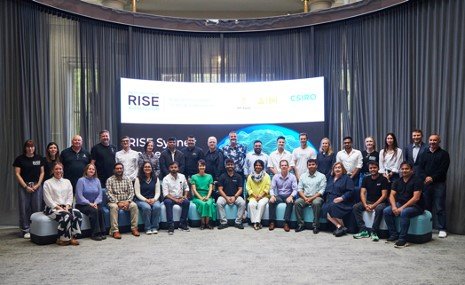India Australia RISE Accelerator calls for Start-ups and MSMEs in Climate Smart Agritech
The RISE Accelerator will focus on start-ups and MSMEs with technologies and solutions that enhance agricultural productivity.
The Atal Innovation Mission – in partnership with CSIRO, Australia – is inviting applications from start-ups and MSMEs from India and Australia for the Climate Smart Agritech cohort of the India Australia Rapid Innovation and Start-up Expansion (RISE) Accelerator – a program designed to support businesses aiming for international expansion between the two countries. This marks a significant milestone in fostering innovations that address India and Australia’s most pressing shared challenges in the agriculture sector.
Commencing in October 2024, the Climate Smart Agritech cohort of the RISE Accelerator will focus on start-ups and MSMEs with technologies and solutions that enhance agricultural productivity and resilience in the face of growing climate variability, resource scarcity and food insecurity.
The program is particularly interested in start-ups and MSMEs with solutions that prioritise farmer needs, priorities, and on-farm practices. The RISE Accelerator program – launched in 2023 – has been instrumental in supporting start-ups and MSMEs in validating, adapting, and piloting their technologies for new markets. With the introduction of the Climate Smart Agritech cohort, the focus is now on agritech start-ups and MSMEs with solutions that enhance agricultural productivity and resilience in the face of growing environmental challenges.
Tamara Ogilvie, Program Director, CSIRO said, “India and Australia share common agricultural challenges, but the scale and diversity of our farming operations are unique. This cohort will enable participants to achieve product-market fit in diverse markets, and rapidly scale their solutions to meet global demands”.
Over the course of the nine months of the accelerator program, the selected start-ups and MSMEs will benefit from a blend of self-paced online learning and in-person sessions, including immersion weeks in both India and Australia. These sessions will offer deep market insights, one-on-one coaching, and mentorship from subject matter experts and industry professionals. The program is designed to facilitate connections with potential partners and customers, boosting the chances of success in new markets. The program will also involve field trials and technology pilot in the latter half.
Highlighting the importance of the program, Pramit Dash, Program Lead, AIM stated, “by fostering innovation and providing a platform for start-ups to scale their solutions, the RISE Accelerator program not only addresses the immediate challenges in the agriculture sector but also ensures that farmers can access and adopt resilient practices tailored to their specific needs”
The program’s latest round seeks novel solutions to tackle critical agricultural challenges, including boosting productivity, reducing emissions and optimising natural resource use.
Applications for the RISE Accelerator close on 15 September 2024.
There is no charge for start-ups / SMEs to participate in the program, with a number of opportunities to travel between Australia and India. Selected start-ups / SMEs may also be eligible for up to Rs 45 lakhs in non-equity grant. For more information and to apply, please visit https://riseaccelerator.org/
The RISE Accelerator will focus on start-ups


